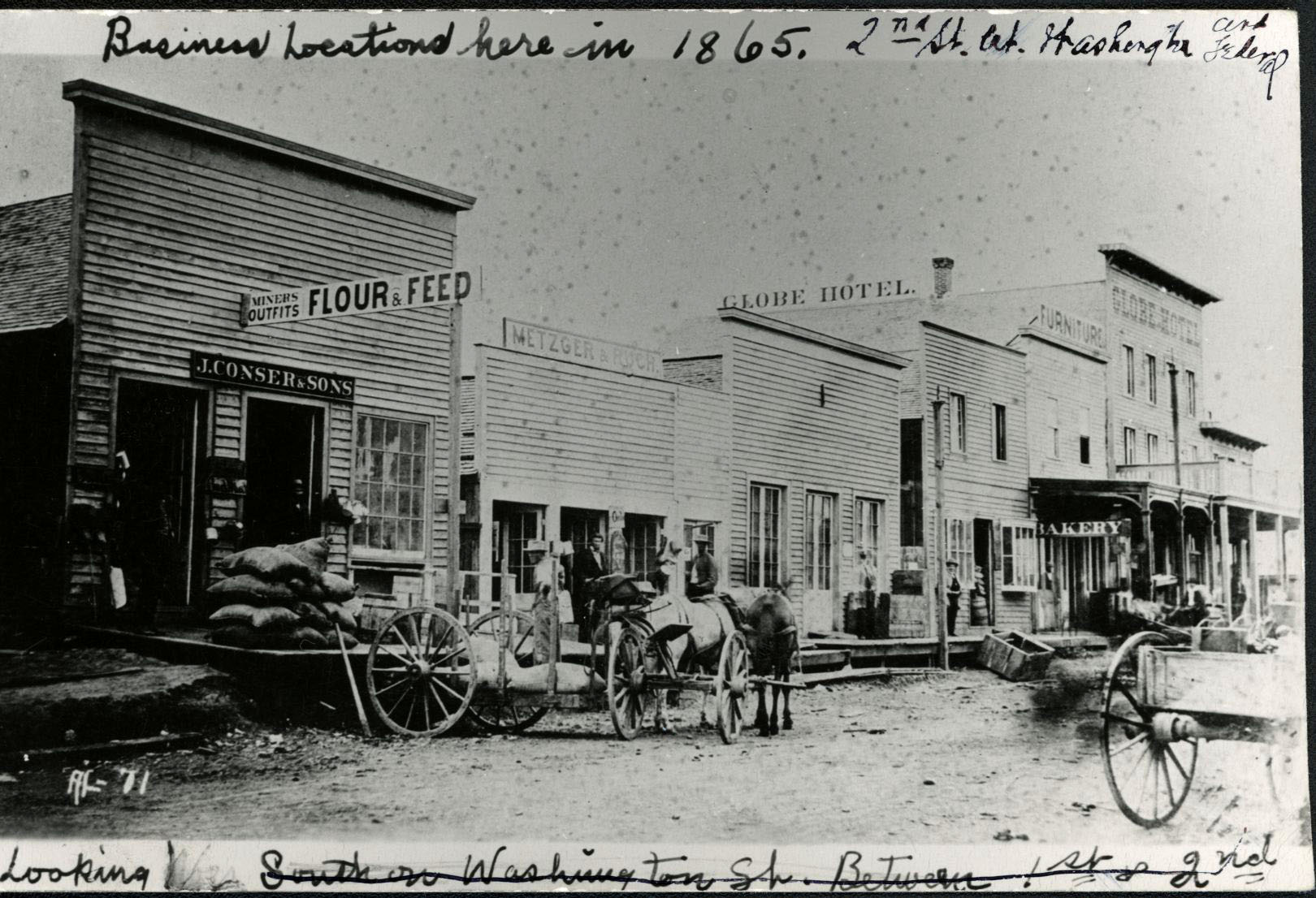Jane and Joseph Sherar, early settlers in central Oregon, were responsible for the construction of Sherar's Bridge, which crosses the Deschutes River southwest of Grass Valley in Wasco County and is now part of Highway 216.
Born in Vermont on November 16, 1833, Joseph Sherar headed west to California in 1855. In 1862, he led pack trains of mules from The Dalles, on the Columbia River, to mining camps in eastern Oregon and Idaho. That year, he met Jane A. Herbert, who was born in Illinois on October 13, 1848, and who had moved to The Dalles with her family in 1850. They married in April 1863. The next year, Joseph sold his pack-train business, and the couple moved to Dufur and then to the Tygh Valley.
In 1871, the Sherars purchased land on the Deschutes River from the Tilkenny Road Company, paying $6,000 and a pack of mules. Bridges had been constructed across the Deschutes at the site since 1825, but none had lasted long. The current was powerful at the crossing, and Joseph Sherar knew a bridge was necessary. The site was one of the few areas where a bridge was practical, and roads from The Dalles converged at the site to continue on to Prineville and the Klamath Agency.
Sherar replaced the log bridge at the site with a sturdier wooden bridge, financing his improvements by charging tolls, which the state permitted because it was the only incentive operators had to build and maintain roads. He became famous in the area as a road-builder, constructing toll roads into Tygh Valley and the Deschutes Canyon. He relied on Indian labor to build and maintain the roads and was popular with tribes in the region since he provided them with steady work. Jane Sherar was also seen as a friend by the Indians, who often went to her when they fell ill.
Sherar's work became so well-known that the city of The Dalles hired him to work on a project in the 1890s. The straightness of the grades was considered remarkable because he worked without anyone to run his grades for him.
The new roads helped open central Oregon to further settlement. At the time, eastern Oregon was experiencing increasing development, and Sherar's crossing was an important waypoint for new homesteaders and miners. Ultimately, Sherar improved the road leading to the bridge for thirty miles in both directions.
The Sherars also managed the Sherar Bridge Hotel, a hotel and stage station at the bridge. The hotel was a well-known waypoint for travelers headed to central Oregon and beyond. By 1893, the hotel was a three-story structure that included thirty-three rooms for travelers, a post office, and a livery stable. Jane Sherar was responsible for managing the finances of the property as well as the correspondence. The building was destroyed in a fire in August 1940.
Jane Sherar died on July 28, 1907, and Joseph Sherar died on February 11, 1908. The bridge declined in importance following the construction of railroads through the region in 1911, although successive operators kept the hotel open until it was destroyed. The story of the Sherars is the subject of A Sweetness to the Soul (1995), a historical novel by Oregon writer Jane Kirkpatrick.
-
![]()
Joseph Sherar, 1889.
Oregon Historical Society Research Library, 015088
-
![]()
Jane Sherar, 1889.
Oregon Historical Society Research Library, 015333
-
![]()
Joseph and Jane Sherar, with guests, 1892.
Oregon Historical Society Research Library, 017998
-
![]()
Sherars Hotel and toll bridge.
Oregon Historical Society Research Library, 020278
-
![]()
View from Sherars Bridge, 1908.
Oregon Historical Society Research Library, Finley, Org. Lot 369
-
![]()
Sherars Falls, 1908.
Oregon Historical Society Research Library, Finley, Org. Lot 369
Related Entries
-
![Dufur]()
Dufur
Dufur, located thirteen miles south of The Dalles on U.S. 197, is a far…
-
![The Dalles]()
The Dalles
The Dalles is one of the oldest permanently occupied places in Oregon, …
Related Historical Records
Map This on the Oregon History WayFinder
The Oregon History Wayfinder is an interactive map that identifies significant places, people, and events in Oregon history.
Further Reading
Jetté, Melinda. "Sherar's Hotel & Toll Bridge, c. 1910." Oregon Historical Society Oregon History Project.
Kirkpatrick, Jane. A Sweetness to the Soul. Sisters, Ore.: Multnomah Publishers, Inc., 1995.








